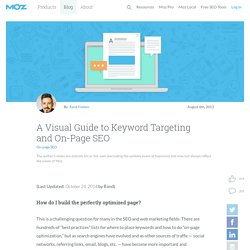

Content Marketing from Squirrly. Free SEO Audit Tool - White-Label & Embed Options Available. What Is User Experience Design? Overview, Tools And Resources. Advertisement Websites and Web applications have become progressively more complex as our industry’s technologies and methodologies advance.

What used to be a one-way static medium has evolved into a very rich and interactive experience. But regardless of how much has changed in the production process, a website’s success still hinges on just one thing: how users perceive it. “Does this website give me value? Is it easy to use? User experience design is all about striving to make them answer “Yes” to all of those questions. What Is User Experience? User experience (abbreviated as UX) is how a person feels when interfacing with a system. Those who work on UX (called UX designers) study and evaluate how users feel about a system, looking at such things as ease of use, perception of the value of the system, utility, efficiency in performing tasks and so forth. UX designers also look at sub-systems and processes within a system. Why Is UX Important? There was no science behind what we did.
A Visual Guide to Keyword Targeting and On-Page Optimization. (Last Updated: October 24, 2014 by Rand) How do I build the perfectly optimized page?

This is a challenging question for many in the SEO and web marketing fields. There are hundreds of "best practices" lists for where to place keywords and how to do "on-page optimization," but as search engines have evolved and as other sources of traffic — social networks, referring links, email, blogs, etc. — have become more important and interconnected, the very nature of what's "optimal" is up for debate. My perspective is certainly not gospel, but it's informed by years of experience, testing, failure, and learning alongside a lot of metrics from Moz's phenomenal data science team. I don't think there's one absolute right way to optimize a page, but I do think I can share a lot about the architecture of how to target content and increase the likelihood that it will: larger version In the old days of SEO, "on-page optimization" referred merely to keyword placement.
Larger version Uniquely valuable. Search Marketing Advice, News and Tutorials. Search engine optimisation in Wales. Magento SEO: 4 Easy Ways to Improve Results. We recently switched over to Magento for a number of reasons.

In the transition however, we realized one of the challenges of Magento: Search Engine Optimization. Through some research, experimentation, a few small changes and redesigning, we were able to improve Magento’s out of the box SEO and get back on Google’s good side. Here’s a quick summary of some changes you should consider, whether you’ve been using Magento for a while or you just started: 1. Optimize your URLs Magento’s URLs are pretty ugly at first. Set System > Configuration > Web > “Use Web Server Rewrites” to Yes.
Make sure your URLs aren’t too long. 2. CMS Pages: For CMS pages, your “Page Title” is the Meta Title.Products: Go to Catalog > Manage Products. 3. Too many links in the nav or footer can skyrocket your link count on every page, breaking the generally accepted 100 link per page limit, and you’ll look like a link farm to a crawler. 4. Canonical link element. A canonical link element is an HTML element that helps webmasters prevent duplicate content issues by specifying the "canonical", or "preferred", version of a web page[1][2] as part of search engine optimization.

It is described in RFC 6596, which went live in April 2012. Duplicate content issues occur when the same content is accessible from multiple URLs.[3] For example, would be considered by search engines to be an entirely different page from even though both URLs return the same content. Another example is essentially the same (tabular) content, but sorted differently. In February 2009, Google, Yahoo and Microsoft announced support for the canonical link element, which can be inserted into the <head> section of a web page, to allow webmasters to prevent these issues.[4] The canonical link element helps webmasters make clear to the search engines which page should be credited as the original. Examples of the canonical link element[edit] References[edit] Sitebeam - Test your websites for everything. SEO Site Checkup.